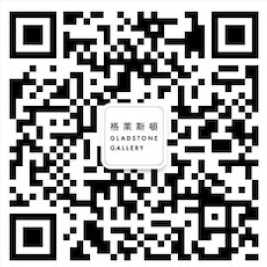March 14 – August 4, 2020
530 West 21st Street
下载新闻稿
Gladstone Gallery is pleased to present an exhibition of historic works by Guo Fengyi, the artist’s first exhibition with the gallery in New York. The show focuses on a selection of Guo’s hyperdetailed and conceptually complex scrolls that range in scale from 12 feet to nearly 30 feet in height. Created by employing a meditation system associated with tai chi, these works present an in-depth survey of the artist’s practice which began during the latter portion of her life. In addition to the drawings, the gallery will exhibit one of Guo’s notebooks documenting her qigong regimen, allowing viewers a unique look at the process that afforded the artist’s unique and therapeutic approach to artmaking. Concurrent to this exhibition, The Drawing Center is hosting “Guo Fengyi: To See from a Distance,” the artist’s first solo institutional exhibition in New York.
Gladstone Gallery is pleased to present an exhibition of historic works by Guo Fengyi, the artist’s first exhibition with the gallery in New York. The show focuses on a selection of Guo’s hyperdetailed and conceptually complex scrolls that range in scale from 12 feet to nearly 30 feet in height. Created by employing a meditation system associated with tai chi, these works present an in-depth survey of the artist’s practice which began during the latter portion of her life. In addition to the drawings, the gallery will exhibit one of Guo’s notebooks documenting her qigong regimen, allowing viewers a unique look at the process that afforded the artist’s unique and therapeutic approach to artmaking. Concurrent to this exhibition, The Drawing Center is hosting “Guo Fengyi: To See from a Distance,” the artist’s first solo institutional exhibition in New York.
Born in 1942 in Xi'an, China, Guo began her artistic practice later in life, and this exhibition demonstrates a series of significant and radical bodies of work that she developed throughout her career. Guo worked at a rubber factory until the age of 39, when a severe arthritis diagnosis forced her into early retirement. In order to alleviate the pain from this ailment and hoping to continue working with her hands, Guo started to study qigong, a Chinese system of physical exercise and breath control related to tai chi. While engaging in qigong, Guo would enter a state of trance that prompted transcendent visualizations that she would then transfer onto scrolls in vibrant color and ornate detail. Similar to the Surrealist implementation of automatic drawing, Guo’s mode of artmaking deeply connects with early modernist tactics of allowing the subconscious to inform the act of creation, and the works included in this exhibition demonstrate her formal and conceptual rigor.
Guo’s methodical approach to figure drawing, activated by her traditional meditative practices, imaginatively visualizes unseen objects and concepts of interest to the artist, such as human organs, the underworld, and energy channels. Early in her career, Guo worked with readymade Chinese scrolls and used primarily black and white materials as she began to formalize a signature stylistic approach to drawing. By employing these scrolls in untraditional ways, Guo chose to render her fantastical subjects as she saw them, rather than adhering to any of the conventional methods prescribed for traditional artistic mediums. Guo’s last and most prolific series of works were created on rice paper and concentrated on different figures representative of specific locations and powerful energies. This area of focus led to the creation of lively and deeply personal portraits of close companions and anonymous characters alike, such as dragons, mythological entities, and elaborately dressed personages that embodied both humanoid and otherworldly qualities. Guo’s whimsical subjects also connected to her research of I Ching (Book of Changes in English), an ancient divination text and the oldest of the Chinese classics. This text informed Guo’s contemplation of and depiction of traditional Chinese systems of thought, namely cosmology, divination, acupuncture energy maps, sage kings, geomancy and dynastic grave sites, all of which have become dispensable in a modernizing China. Guo’s work reasserts the power of these systems, preserving cultural thought and embracing Chinese folk knowledge as both a way of living and a stimulus for creativity.
Guo Fengyi was born in 1942 and passed away in 2010 in Xi'an, central China. During her lifetime, Guo was represented in major institutional exhibitions and projects at institutions such as the Gwangju Biennial (2010); The Museum of Everything, London (2009), Mori Art Museum, Japan (2009); Kunsthaus Graz, Austria (2007); Shenzhen Biennial (2006); Taipei Biennale (2005); Yokohama Triennial, Japan (2005); Prague International Biennale of Contemporary Art (2005); and the Museum of Contemporary Art, Lyon, France (2004). In 2002, Guo worked with Judy Chicago on a multi-venue event for Long March Project After her death in 2010, the Contemporary Art Gallery in Vancouver, Canada organized the first North American survey of Guo’s work that opened in 2012. Other group exhibition venue highlights after her passing include The Museum of Old and New Art, Tasmania, Australia (2017); Kunsthal Rotterdam (2016); Carnegie International, Carnegie Museum of Art (2013); Hayward Gallery, London (2013); The 55th Venice Biennale (2013); and the Asian Art Museum, San Francisco (2012).
